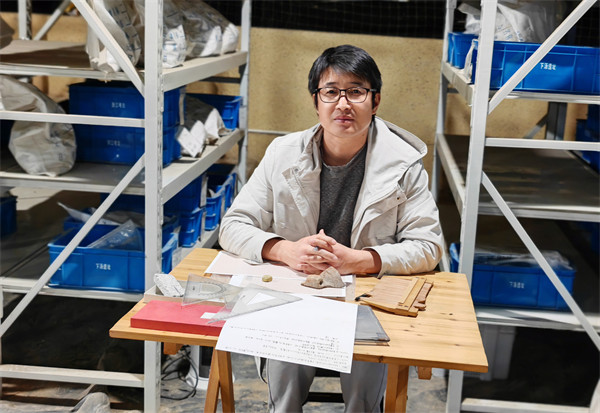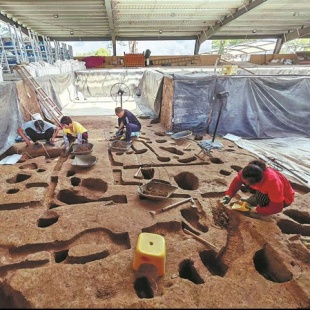Discovery sheds light on early agriculture


Xiatang is the southernmost of the 24 sites associated with the Shangshan culture. Echoing with Lyu's research, at Xiatang, wild rice dating back around 15,000 to 30,000 years has been discovered, while domesticated rice constitutes 75 percent of the rice remains found in the soil deposits of the Shangshan culture, Zhong says.
According to him, the Xiatang site reveals the layout and evolution of the settlement during the mid to late period of Shangshan culture.
Enclosed by the moat is a large terrace at the center with remnants of four mid-Shangshan culture house foundations — either circular or rectangular, possibly with fence-like facilities — a food processing base, a ditch and a road.
This central terrace is surrounded on its northern and eastern sides by a dozen smaller elevated earthen platforms, where one mid- and two late-Shangshan culture house foundations and three high-level late-Shangshan culture tombs have been found. On the outskirts of the site, archaeologists have also discovered relics of rice fields dating back more than 4,000 years.
Analysis into the leftover traces on the many millstones unearthed from the food processing base shows that ancient Xiatang residents developed a variety of diet: rice, acorns and coix seeds, apart from pork, deer, fish and freshwater shellfish.
Zhong says the elevated earthen platforms, each being relatively independent and equipped with production, living and ritual facilities, may have represented the basic social organizational units within the ancient village. The central terrace, on the other hand, was likely to have served a public function.
Besides diverse stone tools for farming and handling food, around 400 pottery pieces in various shapes and sizes, such as large-mouthed basins, flat-bottomed jars, bowls and cups, form another highlight of the Xiatang site. Ancient artisans would paint pottery bodies with red pigment made from hematite, or decorate them with stripe patterns before firing them.





































